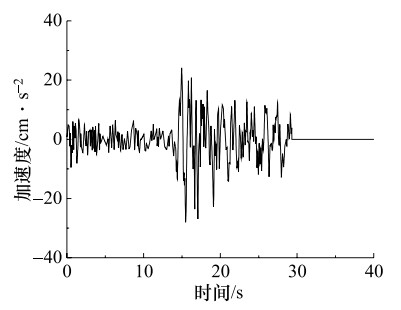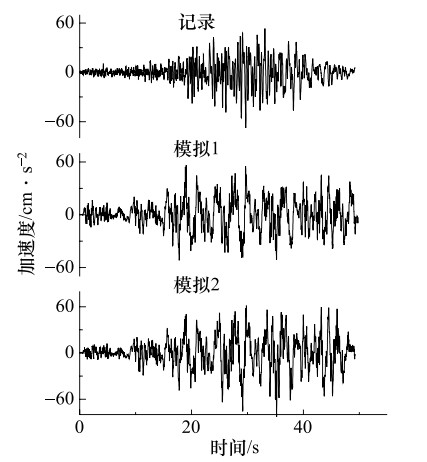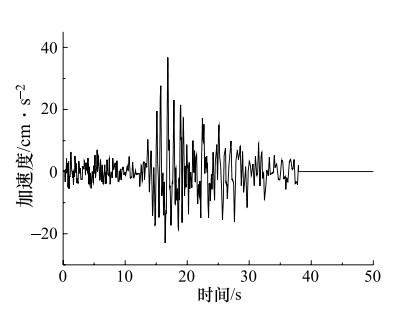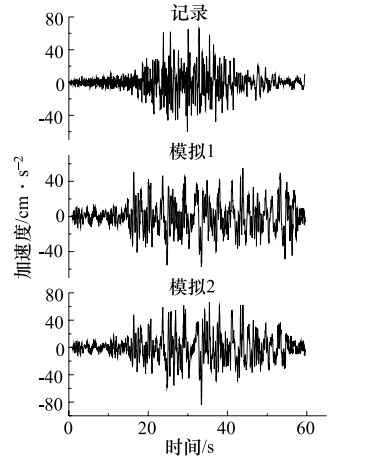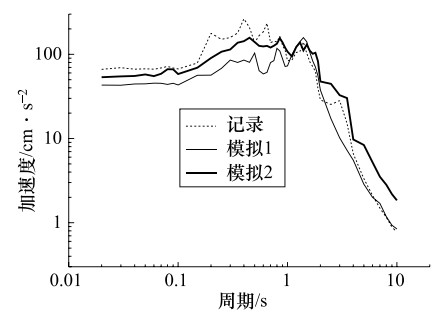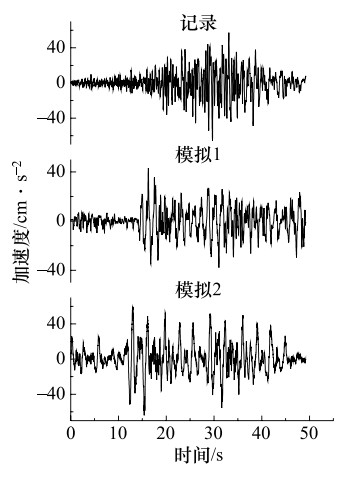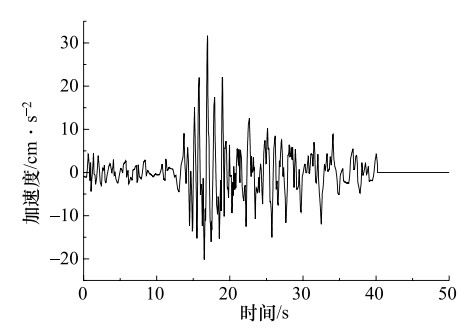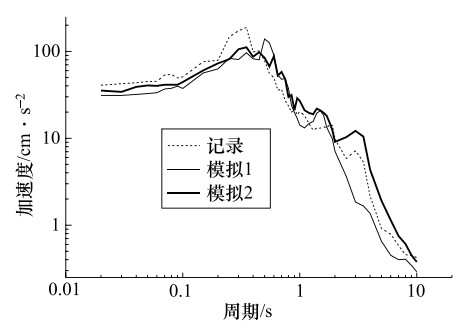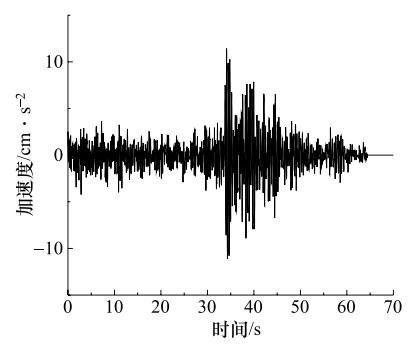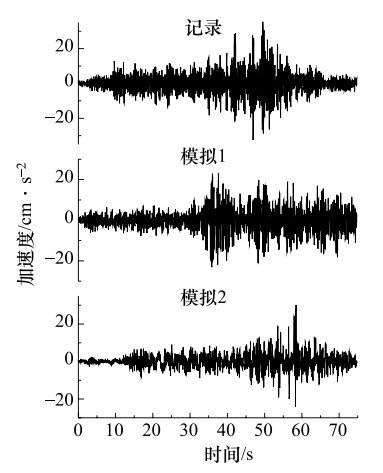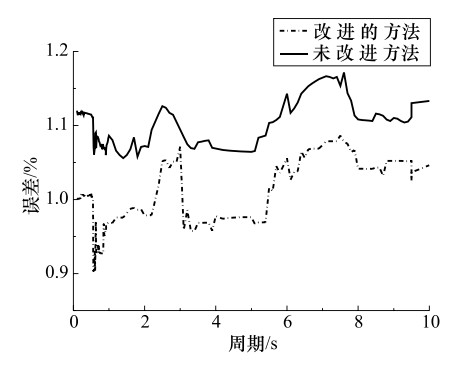Ground Motion Simulations of Tangshan with Improved Empirical Green's Function
-
摘要: 建筑物的抗震设防需要尽可能地掌握未来大地震强震动记录信息,但大地震强震动记录的匮乏阻碍了抗震设防实践的发展。经验格林函数方法作为模拟地震动的主要方法,可以提供可靠的大地震强震动记录,但也存在着许多问题,如缺乏对大地震断层滑动分布不均匀的描述、用经验确定小震数目、模拟方法受到大小地震相似条件的限制等。文中对上述经验格林函数方法存在的问题进行了研究,改进的经验格林函数方法,有效地解决了上述问题。并用其对唐山大地震进行了模拟,并把模拟的地震动时程和反应谱与实际记录相比较,发现用改进方法模拟的地震动加速度反应谱比用未改进方法模拟结果更接近实际的地震动记录加速度反应谱。由此说明改进的经验格林函数可更准确的模拟地震动。Abstract: The seismic fortification of buildings needs to master the records of future large earthquakes as much as we can, but the lack of time histories of large earthquakes have hindered the progress of fortification for large earthquakes. Empirical Green's function method as the main method to simulate ground motions, can provide reliable strong ground motion records, but there are lack of descriptions that earthquake fault slip distribution is not uniform, the number of small earthquake is determined by experience, and simulation method is limited by similar condition. Therefore, the above situations are studied, and an improved empirical Green's function method is proposed to effectively solve the above problems effectively. We used to improved empirical Green's function method to simulate the Tangshan earthquake. The comparisons are made for the simulated seismic time histories, response spectra and the records. We found that the response spectra simulated by the improved method are closer to the seismic records than those obtained by the no-improved method. It is shown that the improved method is an effective method for simulation of ground motion.
-
表 1 唐山大地震断层参数
Table 1. Fault parameters of the Tangshan earthquake
断层编号 走向/° 倾角/° M0/dyne·cm L×W/km2 D/m Δσ/bar 1 30 80 7.0×1026 57×20 1.38 20 2 50 80 7.0×1026 57×20 1.38 20 表 2 宁河地震(MS 6.9)参数
Table 2. The Ninghe earthquake parameters (MS 6.9)
震中位置 震源深度/km 发震时刻 走向/° 倾角/° M0/dyne·cm L×W/km2 Δσ/bar D/m 39°17′N
118°47′E17 1976-11-9
21:53330 39 8.0×1025 18×9 35 0.672 表 3 大地震子断层含子事件个数
Table 3. The mumber of sub-events in the main earthquake
子断层编号 NL NW ND 1 4 3 3 2 4 3 3 -
国家地震局《一九七六年唐山地震》编辑组, 1982.一九七六年唐山地震.北京:地震出版社. 李启成, 2010.经验格林函数方法模拟地震动研究.哈尔滨:中国地震局工程力学研究所. 李启成, 孙颍川, 闫晓丹, 2016.用格林函数方法模拟卢龙地震.地球物理学进展, 31(5):1947-1952. http://d.old.wanfangdata.com.cn/Periodical/dzgcygczd200902003 罗奇峰, 1989.近场加速度的半经验合成.哈尔滨:国家地震局工程力学研究所. 王海云, 2004.近场强地震动预测的有限断层震源模型.哈尔滨:中国地震局工程力学研究所. http://d.old.wanfangdata.com.cn/Thesis/Y622304 吴迪, 2008.基于凹凸体模型的地震动半经验合成研究.上海:同济大学. 谢小碧, 1988.理论地震图方法及其在研究震源过程方面的应用.北京:中国科学院地球物理研究所. 药晓东, 章文波, 于湘伟, 2015.2008年汶川8.0级大地震近场强地面运动的模拟.地球物理学报, 58(3):886-903. http://www.wanfangdata.com.cn/details/detail.do?_type=perio&id=dqwlxb201503017 张之立, 李钦祖, 谷继成等, 1980.唐山地震的破裂过程及其力学分析.地震学报, 2(2):111-129. http://www.wanfangdata.com.cn/details/detail.do?_type=perio&id=HY000001790762 周蕙兰, 1985.浅源走滑大震震源过程的某些特征.地球物理学报, 28(6):579-587. doi: 10.3321/j.issn:0001-5733.1985.06.004 朱传镇, 1985.唐山及其邻区的地震活动.见: 刘恢先主编, 唐山大地震震害.北京: 地震出版社, 1-16. Beresnev I. A., Atkinson G. M., 1998. Stochastic finite-fault modeling of ground motions from the 1994 northridge, California, earthquake. Ⅰ. Validation on rock sites. Bulletin of the Seismological Society of America, 88 (6):1392-1401. Boore D. M., 2003. Simulation of ground motion using the stochastic method. Pure and Applied Geophysics, 160 (3-4):635-676. http://d.old.wanfangdata.com.cn/OAPaper/oai_doaj-articles_773ad1cbf1dcba3266bb060c1201c3cd Irikura K., 1983. Semi-empirical estimation of strong ground motions during large earthquakes. Bull Disas Prev Res Inst, Kyoto University, 33:63-104. https://repository.kulib.kyoto-u.ac.jp/dspace/handle/2433/124917 Irikura K., 1986. Prediction of strong acceleration motion using empirical Green's function. In: Proceedings of the 7th Japan Earthquake Engineering Symposium. December 8, Tokyo, 151-156. Irikura K., 1989. Prediction of strong ground motion using empirical Green's function-some problems of synthetic procedure of ground motion. Disaster prevention research institute annuals, Kyoto University, 32 (B-1):41-52. https://ci.nii.ac.jp/naid/120001178494/en/ Irikura K., Kamae K., 1994. Estimation of strong ground motion in broad-frequency band based on a seismic source scaling model and an empirical Green's function technique. Annals of Geophysics, 37 (6):1721-1743. http://www.wanfangdata.com.cn/details/detail.do?_type=perio&id=Doaj000000629618 Irikura K., 2000. Prediction of strong motions from future earthquakes caused by active faults-case of the Osaka basin. In: Proceedings of the 12th World Conference on Earthquake Engineering. Auckland: IAEE. Irikura K., Miyake H., Iwata T., 2004. Recipe for predicting strong ground motions from future large earthquakes. Disaster prevention research institute annuals, Kyoto University, 47 (A), 25-45. Irikura K., 2006. Predicting strong ground motions with a "recipe". Bull disas prev res inst Univ Tokyo, 81:341-352. James M., 2002, Earthquake Source Studies Related to Strong Ground Motion Estimates. Report of Japan's Ministry of Culture, Science and Technology, 664-670. http://www.wanfangdata.com.cn/details/detail.do?_type=perio&id=77d433887077f8d263b928df128a284e -




 下载:
下载:
